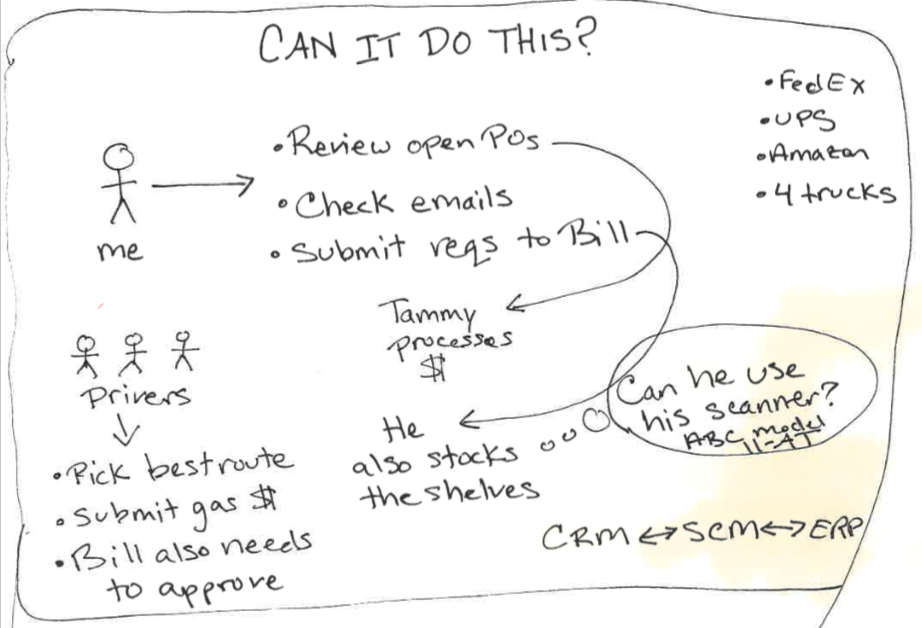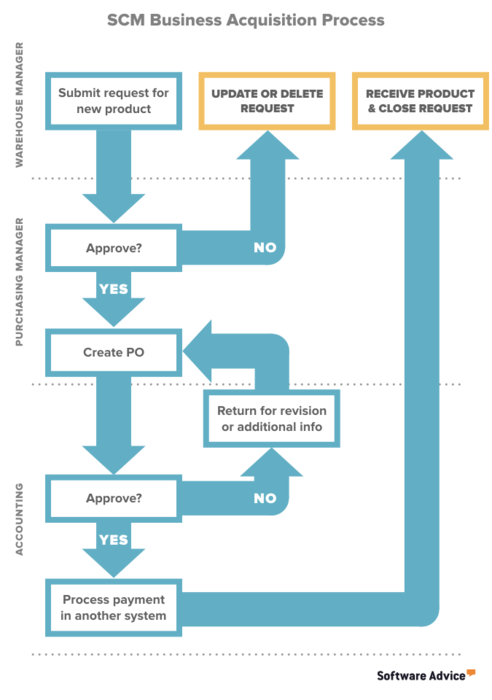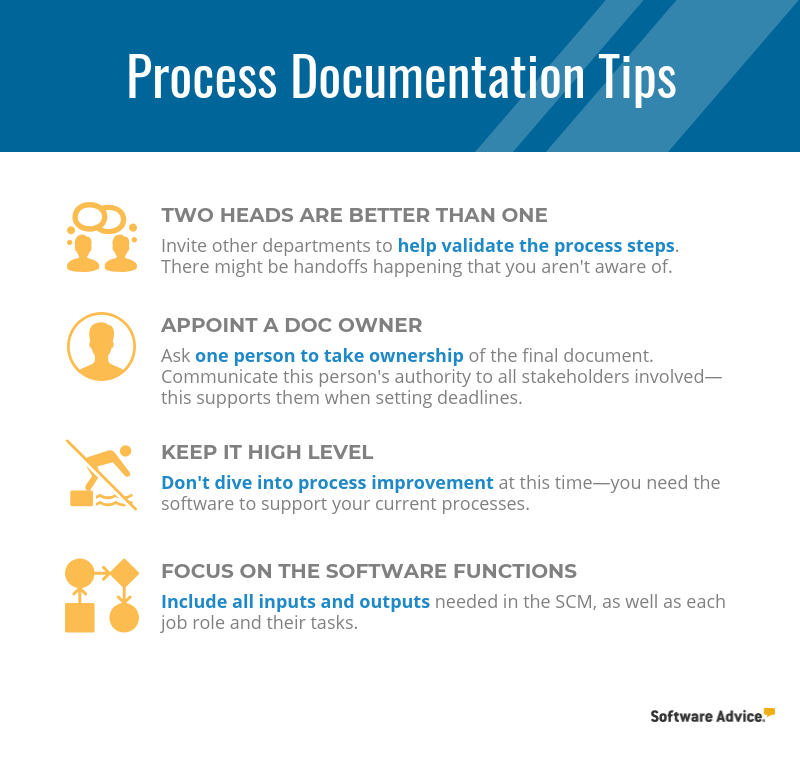Why a Supply Chain Process Flowchart Protects Your SCM Purchase
New software is an investment and you need that investment to pay off. What’s one of the biggest mistakes you can make when purchasing new software? Not giving the vendor adequate information about your needs.
A lack of clear requirements results in inaccurate estimates of the level of work for the implementation. This means scope creep and unexpected costs, and the possibility that the product you chose won’t be the best fit for your business.
Creating an end-to-end process flowchart before choosing and implementing supply chain management (SCM) software will help protect your investment by providing the necessary information to vendors before agreeing on cost.
A process flowchart is typically the most effective way to visualize what the software needs to do for your business. This article will cover best practices and tips for creating your supply chain process flowchart.
But first, here’s an example of what NOT to provide to a software vendor:

A hand-drawn process flowchart
This drawing is too confusing to inform a vendor of your software needs—it’s filled with jargon, gaps in process, and even a coffee stain.
Why is a supply chain process flowchart important?
A process flowchart will be instrumental while you select, negotiate a contract for, and implement a new SCM system. The number of integrations, complexity of forms, and workflows identified in the flowchart will all impact the software capability you require.
Let’s go through the benefits of a flowchart at each stage of the purchase cycle:
Selection: Your process flowchart will help potential vendors provide a demo of their product using your process as the guide for how to show functionality. This not only gives you a strong idea of how the software will work for you, but it also can highlight gaps in the product that you may otherwise have only seen once you’ve bought it.
Contract n**egotiation:** The selected vendor will use the flowchart, and additional requirements, to draft a thorough statement of work. The contract should break down costs for the configurations and integrations you included in your flowchart. This is the time to double-check the vendor’s work against your needs.
Pro tip: Some of what you’re asking from a vendor could require custom code. You and your IT team need to know exactly what the vendor considers custom code and push them to instead find a configuration option. Custom code is expensive to maintain and upgrade.
Implementation: After you’ve signed a service contract and implementation begins, the vendor will be able to quickly start configurations because of the level of detail you’ve already provided in the flowchart. This will reduce the cost and timeline of implementation.
When to create a process flowchart
Expect for this task to take at minimum a week in order to ensure you have time to go over it with other department heads and your team.
The ideal time to send the file to a potential vendor is before they demonstrate their product to you, so they can highlight during the demo how their software supports your process.
It’s also good practice to revisit this documentation annually, if you’re not doing so already, and make updates to reflect any process changes you’ve implemented.
How to get started
Typically, only large enterprises with complex infrastructures need to hire a third-party consultant to perform discovery sessions in order to create flowcharts. You will likely be able to create the flowchart with some help from your key department heads and your team.
Start with a whiteboard as it allows for edits, expansions, and collaboration. Believe me, there will be extensive revisions.
If you’ve already selected a vendor, ask for their help in creating this documentation. Having a third-party involved can typically keep the scope of the meetings on point.
What’s included in a process flowchart?
There are myriad online tools you can use to create the flowchart. We recommend picking one and saving the file in a format that can be easily shared and modified when needed.
Key information to include:
Swim lanes: Show each department that has a step to take in the process in their own swim lane. Regardless of if they’ll be using the SCM or not, this helps identify the integrations needed.
Tasks: Include every input and output at each step in the process and place the task in the swim lane of who performs it. For example, an inspection form that needs to be uploaded is an input, and a daily batch of payables for accounting is an output.
Decision trees: Use a diamond shape to show each decision or approval within the process and what happens for each outcome. Ask yourself, who makes the decision? What information do they need? Are there approval level thresholds?
An example of a process flow chart is below:

Tips from a process doc analyst
Yours truly has nearly a decade of experience in documenting business and technical requirements for corporations purchasing new software systems. Below are my top tips to keep in mind while you draft your own process flowchart.

Looking for more info?
Here’s another article that covers five critical steps to include in your software implementation plan—bet you can guess what the first one is!